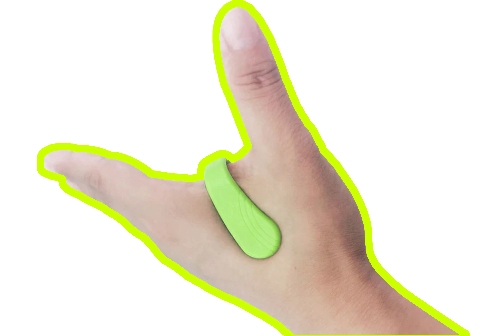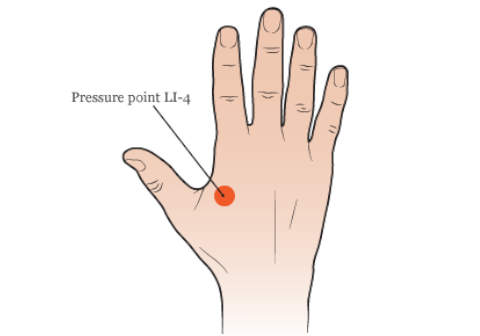Chinese Medicine & Migraines
AcupressurePro aids digestive health, and alleviates symptoms of irritable bowel syndrome.
AcupressurePro helps regulate the body's stress response and contributes to better mental and emotional well-being.
In a world where modern medicine dominates, it’s easy to overlook the profound healing wisdom that Eastern traditions like Chinese Medicine offer. Chinese Medicine has a legacy spanning thousands of years, rooted in the idea of achieving harmony and balance within the body. This holistic approach addresses not only the physical symptoms but also the underlying imbalances that lead to discomfort and pain. In this article, we delve deep into the intricacies of Chinese Medicine, exploring how it can bid farewell to pain and usher in a transformative journey towards optimal well-being.
Latest Client Work!
Project One
Natoque eligendi
Project Three
Natoque eligendi
Supporting Subheading
How Chinese Medicine Helps with Migraines: Unveiling the Healing Wisdom of Eastern Medicine
In a world where migraines can disrupt the flow of life, the ancient wisdom of Chinese Medicine emerges as a soothing balm. While modern medical interventions offer relief, the holistic approach of Chinese Medicine presents a profound alternative, rooted in centuries-old practices. Delving into the realms of herbalism and acupuncture, we uncover how the intricate principles of Eastern Medicine can alleviate the torment of migraines, restoring balance to both body and spirit.
The Essence of Qi and Yin-Yang Balance
Central to Chinese Medicine is the concept of Qi, the life force that flows through the body’s meridians. Qi governs our overall health, and its harmonious circulation is vital for well-being. Within the theory of Yin-Yang, two opposing forces intertwined in every aspect of existence, lies the key to equilibrium. Migraines, in this context, are attributed to an imbalance in these forces, causing energy blockages and pain. By restoring the flow of Qi and harmonizing Yin-Yang, Chinese Medicine seeks to address the root causes of migraines.
Herbal Allies from Nature’s Apothecary
Chinese herbalism, a cornerstone of Eastern Medicine, offers a treasure trove of natural remedies. One potent ally is the “Chuan Xiong,” also known as Ligusticum wallichii. Revered for its blood-moving properties, Chuan Xiong alleviates migraines arising from stagnant blood circulation. Similarly, the “Gou Teng” vine has a calming effect on the liver, which, when overheated, can trigger intense headaches. These herbs, carefully administered in precise formulations, aim not only to relieve symptoms but to rectify the underlying imbalances, curbing the frequency of migraines.
Herbal Medicine: Nature’s Pharmacy
Chinese Medicine is also synonymous with a rich tradition of herbal medicine. Every herb is selected for its unique properties and functions within the body. For instance, Turmeric – known as “Jiang Huang” in Chinese – is a potent anti-inflammatory herb that has been used for centuries to alleviate pain, especially in conditions like arthritis. By integrating these herbs into personalized formulations, Chinese Medicine tailors treatment to individual needs.
Acupuncture: Channeling Harmony
Imagine thin needles dissolving the knots of pain, and you enter the realm of acupuncture. This ancient practice involves stimulating specific points along the body’s meridians to restore the balance of energy. For migraines, the “Feng Chi” point at the base of the skull and the “Tai Yang” point on the temples are often targeted. By unblocking the energy pathways and allowing Qi to flow freely, acupuncture addresses the disharmony that gives rise to migraines.
The Wisdom of Tui Na Massage
Tui Na, a therapeutic massage rooted in Chinese Medicine, offers profound relief to migraine sufferers. By kneading and pressing specific points on the body, Tui Na therapists aim to invigorate the flow of Qi and blood. The “Tou Teng” technique, focused on the head and neck, brings respite to tension-induced migraines. This tactile approach not only releases physical tension but also restores the emotional equilibrium, recognizing the interconnectedness of body and mind.
Mindfulness and Meditation
Beyond herbs and needles, Chinese Medicine embraces the power of the mind. Meditation, specifically “Zhong Ding,” cultivates a centered presence, dissipating stress and anxiety that often trigger migraines. With focused breathing and mental clarity, individuals can temper the intensity of migraines and build resilience against their recurrence.
A Glimpse into Healing
In my years as a practitioner of Chinese Medicine, I’ve witnessed the transformation of countless migraine sufferers. One memorable case involved a woman plagued by migraines for over a decade. Through a tailored combination of herbal remedies, acupuncture, and meditation, her migraines gradually waned. But what struck me most was her newfound awareness of her body’s signals, a deeper connection she had forged during her healing journey.
When delving into the realm of healthcare, it’s impossible to overlook the profound legacy of traditional Chinese medicine (Traditional Chinese Medicine). With a history spanning thousands of years, TCM encompasses a diverse array of modalities, including the likes of acupuncture, Qi Gong, and herbal medicine.
This stands in stark contrast to the Western medical approach, which often centers on surgical procedures and antibiotic treatments. At its core, Traditional Chinese Medicine places a strong emphasis on prevention – an ethos that diverges greatly from the model seen in the United States and other Western countries.
So, what precisely is the mechanism driving Traditional Chinese Medicine’s efficacy? The foundation of traditional Chinese medicine rests upon the belief that the body comprises intricate energy pathways known as meridians.
These meridians course throughout the body, and any hindrance to the flow of energy along these channels is thought to lead to the emergence of illness. Unlike Western medicine’s focus on acute conditions and immediate solutions, Traditional Chinese Medicine shines brightest when addressing chronic symptoms.
Consider the matter of chronic headaches, for instance. While Western medical practitioners often prescribe medications to manage such discomfort, Traditional Chinese Medicine offers a different route.
When conventional remedies prove insufficient, interventions like acupuncture and herbal therapies emerge as promising alternatives within the realm of traditional Chinese medicine.
A recent study conducted at Duke University underscores this, revealing that a significant 65% of individuals undergoing acupuncture experienced notable relief from chronic headaches. These outcomes underscore the effectiveness of Traditional Chinese Medicine, particularly for persistent ailments that may not respond optimally to Western treatment modalities
As a medical professional, I frequently find myself recommending Traditional Chinese Medicine to patients grappling with enduring symptoms that resist resolution through Western medical interventions. The holistic and comprehensive nature of traditional Chinese medicine presents a viable path toward achieving wellness – an aspiration that resonates powerfully with both patients and healthcare providers alike.
As we navigate the labyrinth of migraines, Chinese Medicine emerges as a beacon of hope. Its holistic approach, addressing not just the physical symptoms but also the underlying imbalances, resonates profoundly. By synergizing the wisdom of ancient practices with modern understanding, individuals seeking relief can embark on a holistic healing journey. So, if migraines cast a shadow over your days, consider embracing the healing embrace of Chinese Medicine – a path paved with millennia of wisdom and guided by the harmony of Qi.
Traditional Chinese medicine stands as a testament to the enduring wisdom of ancient healing practices. With its focus on prevention, meridian-based principles, and holistic approaches, Traditional Chinese Medicine offers an invaluable complement to Western medicine. By embracing both the advancements of modern healthcare and the insights of traditional practices, we pave the way for a truly integrative and patient-centric future.
May your journey to healing be profound and enlightening.
Drug Free Pain Relief
Acupressurepro™ - so easy to wear you'll forget it's on - until your headache is gone!



Frequently Asked Questions
Chinese Medicine for Migraines
Chinese Medicine
Some people use traditional Chinese medicine for problems such as asthma, allergies, and infertility. Traditional Chinese Medicine doctors may use several therapies to restore chi balance.
Some psychological and/or physical approaches used in traditional Chinese medicine practices, such as acupuncture and tai chi, may help improve quality of life and certain pain conditions. Studies of Chinese herbal products used in traditional Chinese medicine for a range of medical conditions have had mixed results.
Acupuncture. Moxibustion (the burning of herbal leaves on or near the body) Cupping (the use of warmed glass jars to create suction on certain points of the body) Massage. 36 point, which has a stimulatory impact on intestinal motility.
Migraines
Traditional Chinese Medicine Can Treat Both Headaches and Migraines. Both headaches and migraines are conditions that can be effectively treated by Traditional Chinese Medicine. Acupuncture is the most common form of treatment, but herbs, gua sha, cupping, and lifestyle changes can also be used.
Traditional Chinese medicine theory classifies migraine as an external invasion or an internal disruption. The qi and blood of the six bowels and five viscera all ascend to the head. The three hand yang channels, the three foot yang channels, and the liver channel all meet at the head
For migraine relief, the most important pressure point to know to relieve headache pain is the space between the base of your thumb and your index finger. For those who want to be acupressure experts, it’s called LI-4 (a.k.a. Hegu).

